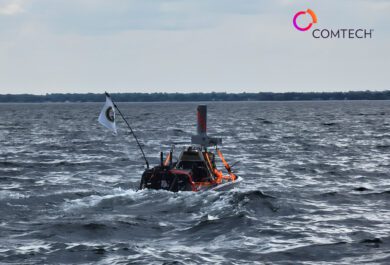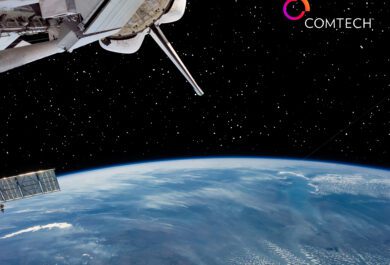To understand the usefulness of technology that pinpoints a precise indoor location, consider the simplest examples. When was the last time you misplaced your phone at home? Maybe you could call your phone if you left it on, so perhaps your TV’s remote control offers a better example.
You can try one of those common apps that locates items. Since these apps typically rely upon the rough triangulation of cell phone signals, they’re usually only accurate from 100 to 300 meters. In other words, they will tell you that you misplaced your device at home — something that you already knew. They won’t tell you if you left the device in the bathroom or it slid between the sofa cushions.
Three Critical Uses for Precise Location Tracking Indoors
The precise location technology offered by Comtech does more than just resolve minor annoyances at home. It can provide precise locations indoors and outdoors with sub-10 meter accuracy. The ability to track people and things this well can save money, time, and even lives. Even better, these solutions have been designed to integrate and implement affordably.
These are some typical and vital uses for precise indoor and outdoor location tracking.
1. Track Assets
Manufacturers, hospitals, and other organizations rely upon expensive, vital equipment. Just last year, the Louisiana Legislative Auditor announced the state lost over $15 million because of lost medical equipment. A few years earlier, one California hospital lost over $12 million in equipment. It’s possible to assume that some items had been stolen or even just misplaced.
With precise location tracking, organizations won’t have to guess where vanished assets have gone and can recover these losses. Besides helping to find equipment, companies can use this sort of technology to help with warehouse management, locating vehicles inside a parking garage or lot, and much more. This also means that the location of inventory, supplies, or vehicles can change dynamically. This benefit ends the reliance upon having everything returned to one, specific location, so it can also improve business processes.
2. Find People
Emergency responders often must find people somewhere within their homes, an office building, or even a busy retail mall. Typical GPS tracking isn’t accurate enough, so relying only upon it can waste valuable time. In some cases, it may even cost lives. One news story cited a common problem that first responders have when they have an address, but the numbers aren’t clearly marked on a residence. In that case, firemen, paramedics, and police may waste time knocking on the wrong door. Similar situations arise when first responders need to track people down within multi-story buildings or outside in places such as parking lots.
Precise location can also be used in business settings such as helping employees find booths at crowded trade shows or other employees at a remote location. It can help locate students and teachers within a large campus, and it can also find parents at home or at their jobs.
3. Invent and Improve
The next-best location-based application probably has not even been invented yet. Developers come up with new, productive uses for apps and IoT devices, but often they lack the required location technology to implement their solutions. They need access to software that already comes packaged with necessary support for various software languages and device operation systems.
Pre-packed software libraries, developer kits, tools, and coding examples can make it easy to integrate this kind of precise location technology into existing products or to create new ones. User-friendly tech can help startups and small businesses as well as global enterprises add location aware capabilities.
One Location Solution Works Almost Anywhere and for Anything
Comtech location solutions work almost anywhere through a variety of networks, like 4G, 3G, and Wi-Fi, device sensors, and more. The API, which includes both indoor and outdoor positioning, search, enhanced local content, maps, navigation, geo-fencing, and tracking, makes it easy to integrate location capabilities into existing devices and systems or to develop new and better products. The low power requirement, small footprint, and cloud-based design of the code accelerates launch and scales quickly.


